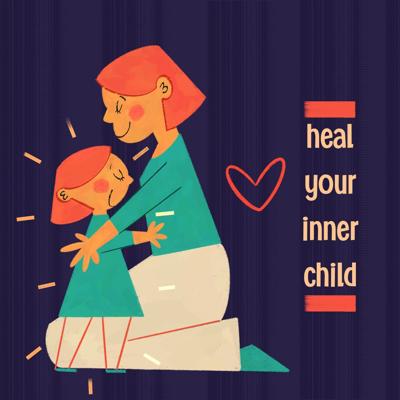
(Gabriela Vega / Daily Titan)
Looking back at fuzzy and euphoric childhood memories paints the perfect picture of child rearing. But, for many adolescents and adults, emotional gashes gnaw at their subconscious inner child — the psychological baggage that holds one’s childlike personality. When a neglected inner child represses memories of vulnerability and insecurity, outbursts may frequently occur throughout adulthood.
Shoving one’s inner child into timeout does not cease the pain. Instead, acknowledging and reparenting one’s inner child is key to a rich and blossoming livelihood of self-compassion.
The inner child healing concept was coined by Carl Jung, a Swiss psychologist and psychiatrist who envisioned the divine child archetype as delicate and pure. Jungian psychology reveals that this archetype is an inborn unconscious driver of human behavior.
In an interview with Well and Good, Carla Marie Manly, Ph.D., a Jungian-trained psychotherapist, effortlessly spots voids of love.
“The inner child is all too often deeply injured. This leaves the individual feeling unworthy, unloved, unseen, and unsafe from childhood through adulthood,” Dr. Manly said.
Every child is shaped by their caregivers. Better yet, a child’s identity is shaped cognitively, emotionally and socially by familial elements through love, support and safety. However, if a damaged inner child is aggravated, survival mode is switched on. Traumas and triggers that linger from childhood patiently wait for the spark to ignite.
All sorts of triggers fume the inner child, such as splintering relationships and injustices, but as adults, they have to recognize that they are the creator of their tsunami-like emotions. It is vital to observe bubbling emotions in the present moment and address them with sincerity and compassion instead of being dragged asunder by emotions.
Some individuals may believe that the importance of nurturing the inner child is a hoax and fiddles with one’s brain. But, they fail to be mindful of the fact that by looking inwards they are tending to a broken inner child. Being sensitive to a younger version of ourselves does not display weakness, but honors our psyches.
According to Dr. Manly, a suffering inner child is exhibited in daily social interactions. “Common examples of an out-of-control inner child include road rage, bullying, self-oriented behavior, verbal abuse, patterns of irresponsibility or chronic fear of rejection.”
However, by detaching one’s inner child from hot-tempered behavioral patterns and acknowledging the past, self-discovery awaits and rebalance is instilled. Fortunately, various methods can soothe the inner child.
For example, writing a sincere letter to one’s inner child lets the heartstrings run wild. Some prompts to delve into include: What things do you want a trusted adult to tell you at that age? What is something kind you can say about yourself? What wisdom can you learn from the wounded inner child?
Additionally, according to Forbes, “when a child is neglected by a caregiver, it may prohibit the release of oxytocin among other hormones such as dopamine.” Releasing oxytocin, a hormone that sends messages of love and safety to the brain, promotes stress relief, improved immunity, relaxation and optimism. Activities that release oxytocin include massages, yoga, petting animals, creating a self-care playlist or intimacy.
Ignoring our inner child amplifies unresolved traumas. Constantly suppressing emotions and tightening our burning throats to resist spilling salty tears dismisses our inner child’s communication.
When reflecting on our childhoods, it is important to recognize the beautiful and the horrid snapshots in time that fuse into our inner child’s makeup. Despite it all, our inner child has persevered and so have we.
Remember the next time you look at a childhood picture of yourself, dorky or comical as it may seem; you are your inner child’s guardian angel.








Commented
Sorry, there are no recent results for popular commented articles.